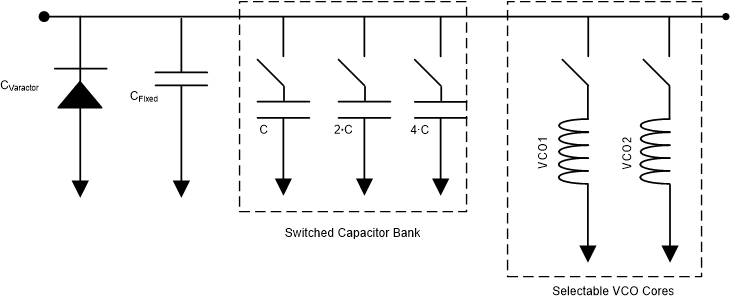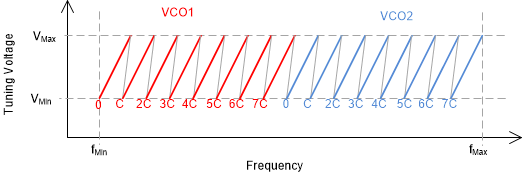SNAA342 September 2020 LMX2820
2.1 Integrated Silicon VCO Structure
Nowadays, PLLs with integrated VCOs on silicon technologies are very common for the reasons cost, size, wideband frequency coverage, and performance. To achieve good wideband performance while keeping good phase noise performance, it is common practice to use a series of switched capacitors and inductors.
 Figure 2-1 Simplified Tank Circuit for
Silicon VCO.
Figure 2-1 Simplified Tank Circuit for
Silicon VCO.  Figure 2-2 Frequency Bands.
Figure 2-2 Frequency Bands. Modern day synthesizers typically have more capacitors and inductors. For instance, the LMX2820 device has eight VCO cores and 192 different values in the capacitor bank to create 1536 total bands. Between these bands, there is overlap to allow for temperature drift and process variation. In addition to this, there is also an internal amplitude setting that varies as a function of frequency and temperature. So in summary, the three key parameters for the VCO Calibration to determine are:
VCO_ CORE: This is the inductor choice that greatly impacts the frequency band
VCO_CAPCODE: This is the capacitor bank setting that changes the frequency band
VCO_DACISET: This is the amplitude setting that optimizes phase noise
The purpose of the VCO calibration is to find the proper values for these three parameters. This calibration is activated by programmable serial commands when a change in frequency is desired.